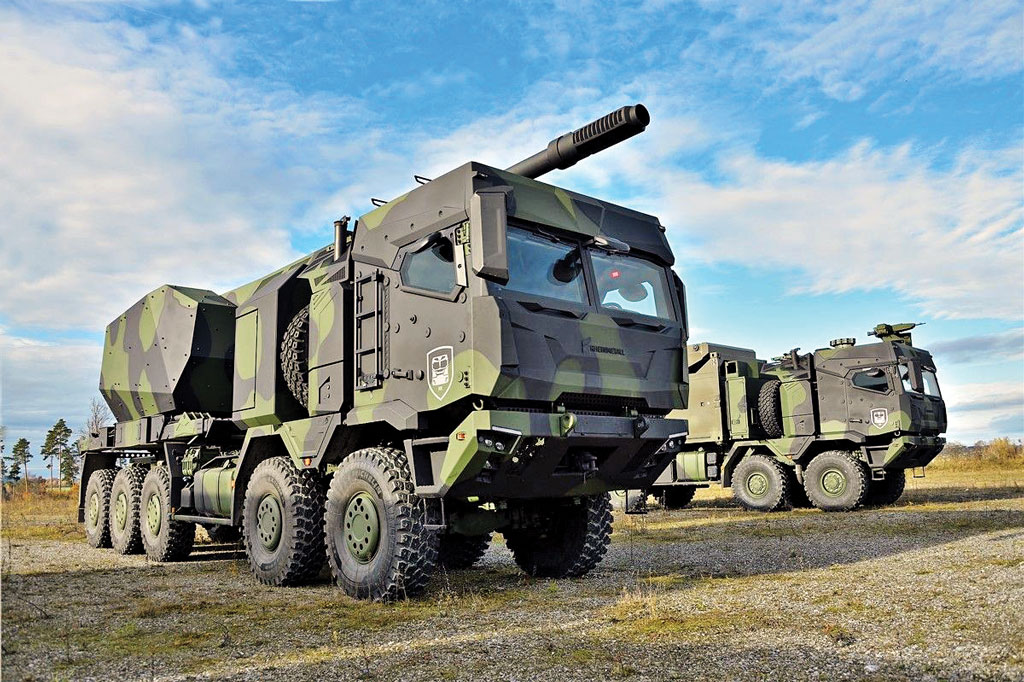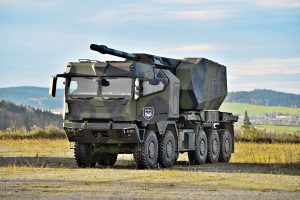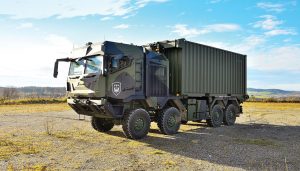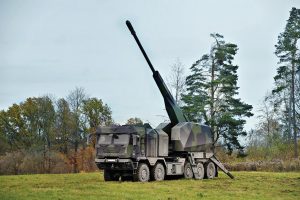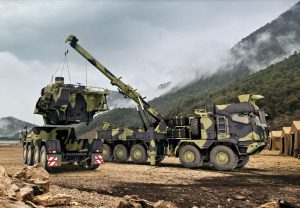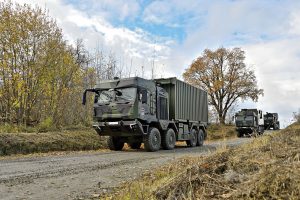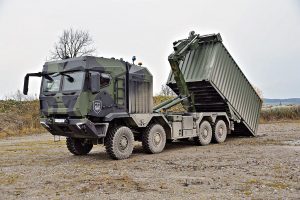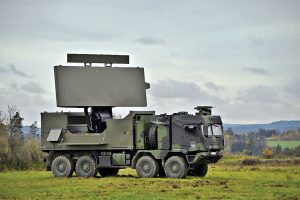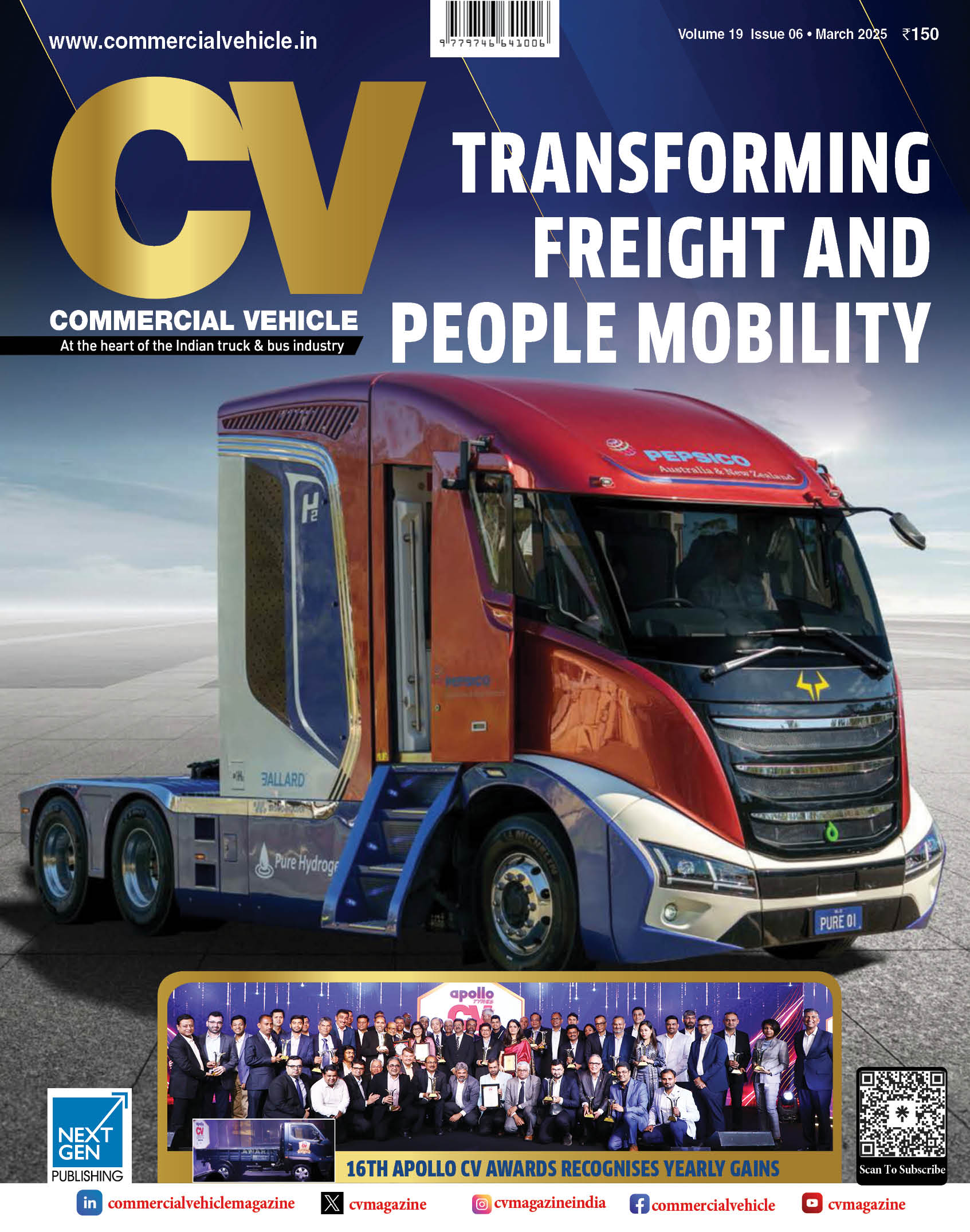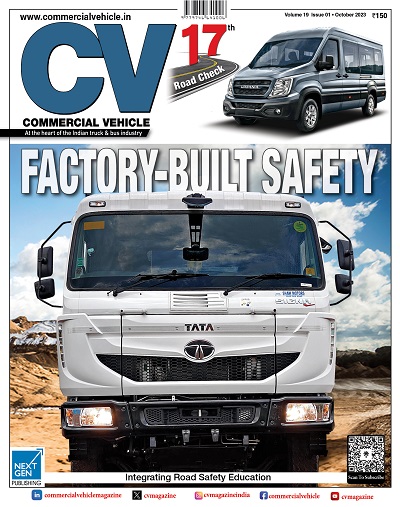Indicating that the demand for self-propelled cannon howitzers on wheeled chassis has gone up, Rheinmetall has announced the launch of HX3, a global range of self-propelled cannon howitzers on a newly developed ‘HX3’ wheeled chassis. Contrary to the notion that cannons and howitzers as well as tanks were a thing of the past, the Rheinmetall HX3 is made interesting by its German engineering attributes. Completely redesigned, the HX3, in the form of a future-proof military truck, addresses contemporary military and automotive megatrends by leveraging innovative new technologies. Promising better protection, improved mobility, enhanced driving comfort as well as a digital interface architecture for greater operational flexibility and future performance upgrades, the military machine builds on the core strengths of the successful HX2. Like the HX2, the HX3 comprises of a generation of military-off-the -shelf (MOTS) products, designed unforgivably for military use under the most gruelling operating conditions. In addition to the robust chassis and powerful engine, the HX3 offers a new active rear axle suspension as an option, which significantly improves the vehicle’s performance both on and off road.
Embodying a platform concept designed for logistic operations and tactical scenarios alike, the HX3 is available in 4×4, 6×6, 8×8 and 10×10 versions. It is characterised by even greater variant and system diversity. Fitted out with new systems such as the fully Automated Load Handling System (ALHS) and Universal Torsion-Resistant Subframe (UTRS), which further facilitate its classic logistics role, the HX3 is also better able than ever to serve as a systems carrier for complex weapon and radar systems. These include truck-based artillery systems, for example. Such systems are expected to gain importance in coming years. Talking about the future, in combination with the newly developed Artillery Truck Interface (ATI), the HX 10×10 could be utilised as the standard basis for various artillery solutions or similar systems. Owing to its completely redesigned cab, the HX3 delivers greater ease of operation and crew protection when compared to HX2. Various assistance systems assure enhanced safety in everyday operations, whether for soldiers deployed in the field or in civilian settings. Coupled with assistance systems such as the Emergency Brake Assist (EBA), Adaptive Cruise Control (ACC) and Lane Departure Warning (LDW), a totally new electronic and electric architecture guarantees the vehicle’s future viability. This, particularly with regard to autonomous driving. The standardised interfaces provide an opportunity to integrate technologies that become available in future, such as truck platooning and other automated applications.
As an option, HX3 trucks can be equipped with an armoured cab, whose protection level can be modularly augmented. Furthermore, in addition to conventional camouflage, the new generation of vehicles feature a digital stealth mode. If necessary, all data transmission and receiver functions can be switched off to reduce the vehicle’s digital signature. As an active self-defence measure, the reinforced roof offers space for weapon stations with heavy weaponry. As a further option, additional active and passive protection systems are available, including Rheinmetall’s ROSY Rapid Obscuring System and the very short-range ADS Active Defence System. Due to a systematically applied identical components concept and extensive functional commonality between different models, administering and operating the fleet of vehicles becomes simpler and more efficient. Strict adherence to a policy of component and functional unity facilitates maintenance, logistics and training, while a global service network guarantees fast resupply and support throughout a long service life. With over 15,000 vehicles in operation worldwide, a high degree of compatibility with previous HX generations only reinforces this. The global presence of RMMV vehicles brings major advantages when it comes to interoperability and logistics, especially during multinational operations. Among others, the circle of international HX user nations includes Germany, Great Britain, Australia, New Zealand and Austria. Norway and Sweden have also placed substantial truck orders with Rheinmetall.
Variety of Systems
More than 15,000 HX trucks on the road worldwide, deployed by armed forces, the HX3 comes backed by a heritage that is expressed in unrivalled superiority. In fact, building on this heritage, the HX3 elevates the game to the next, new exciting level of warfare. It makes the best even better, and takes into consideration the feedback from various users and stakeholders. With impressive new features of this pure military truck supported by various assistance systems, the HX3 offers soldiers and the civilian environment increased safety in everyday vehicle use. It guarantees considerably more protection in theatre in the form of a completely redesigned cabin. Capable of going from one mission success to the next, the HX3, with its even greater variety of variants and systems, answers customer’s need to own a truck that can handle a wide range of tactical roles and tasks in future scenarios. In addition to its classic role as a logistic vehicle, which is enhanced by the availability of new systems such as the new Automated Load Handling System (ALHS) or the Universal Torsion-Resistant Subframe (UTRS), the HX3, to be precise, makes a suitable system carrier. Especially as a carrier truck for complex radar and weapon systems too. A truck that builds itself around artillery systems, which are set to be an important component of the artillery warfare in the coming years.
Situational awareness and soldier centric
With priority to safety, that of the crew and the people in the immediate vicinity of the truck, the HX3 is about decisive improvements. It is about use on public roads as much as it is in complex or stressful manoeuvring and loading operations. Setting new standards for a military truck, the HX3, with its new protected cabin that comprises of a large windscreen and side windows, offers the best possible field of vision. The optional BirdView camera system incorporates the technological advantages of the commercial world for the military. The system also supports the driver, especially in confined urban environments. The completely redesigned cabin interior improves the ergonomics of the driver and passenger workstation and offers more practical space for the needs of the crew. Spacious storage compartments and additional fixation bars, especially above the crew’s heads and in front of the seats ensure even more possibilities to stow away both C4I and personal equipment. What more, the devices are now even easier to reach – exactly where the soldier needs them. In addition to the classic blackout mode, the HX3 now also has a new digital blackout mode. If necessary, this disables all transmission and reception functions to reduce the vehicle’s digital signature.
Unstoppable
Unstoppable by even the most brutal terrain or hindrances off-piste, the HX3 is designed as a pure military truck. It boasts of a robust chassis concept combined with powerful military engines. Able to cope with all emerging requirements – anytime, anywhere, the truck, with its new optional active suspension system on the rear axles, performs very well on-road and off-road. The various driving modes, the driving level control option and active damping also help to cushion shocks and vibrations that are a part and parcel of demanding off-road use. If the all-new Automated Load Handling System (ALHS) revolutionises logistics on the battlefield by allowing a single soldier to operate the system from within the cabin, the HX3 supports faster loading and unloading. Both, containers and flat racks can be loaded without the need for manual support, and even from less than ideal angles and on uneven surfaces.
For tactical scenarios and automation of military operations, the truck functions can be prepared for optionally-manned operations. In combination with a digital interface, the HX3 can either be controlled remotely or operated with a military autonomy kit. The active self-defence aided by the reinforced roof that can now also accommodate high-calibre weapons and offers more options for installing additional active and passive protection systems such as Rheinmetall’s ROSY (Rapid Obscuring System) and ADS (Active Defence System), the military truck is about near infinite logistical and tactical applications .82 in Germany as a manufacturer of horse-drawn carriage, Quantron AG was founded in 2019 to paving the way for e-mobility in inner-city and regional passenger and freight transport. The basis for this would be the commercial vehicle experience of Haller GmbH & Co. KG. Driven by the belief that the importance of diesel drives will steadily decrease. in order to achieve future climate and CO2 targets, the company has announced the introduction of a plug-in hybrid van Q-Light. As a variant of the Q-Light electric van, the plug-in hybrid variant offers high driving range and drive power of a combustion engine with the possibility of covering distances flexibly in emission-free electric mode. In green environmental zones to be precise. The purely electric range of the vehicle is up to 70 km at a top speed of 80 kmph, making the Q-Light Hybrid panel van ideal for sustainable transport services in daily urban traffic. The environmentally friendly vehicle also claimed to tackle gradients and display strong acceleration under heavy load with ease. Depending on the size, the battery is fully charged within just 3.5 to five hours. Additional energy can also be generated while driving via the electric motor, which significantly extends the vehicle’s electric range.
Based on Iveco Daily, the Q-Light plug-in hybrid panel van is near silent in its operation in the emission-free electric mode. This makes it particularly pleasant for residents and employees in and around the vehicle. Coming from a commercial vehicle conversion company, the Q-Light plug-in hybrid panel van, by the virtue of its ability to operate silently and sans any emission, can be used in urban logistics processes during the day and night. Deliveries can also be made outside peak traffic hours, which would help to equalise traffic and reduce peak time congestion. Based on Iveco Daily, the Q-light plug-in hybrid panel van is available in various sizes between 3.5 and seven-tonne GVW. Offered by a company that is said to be working on fuel cell transporter vans in association with AE Driven Solutions (AEDS), the Q-Light offers a payload of up to 3,400 kg depending on the version chosen. Available in both manual and Hi-Matic automatic transmissions, the Q-Light plug-in hybrid panel van is supported by years of experience of Quantron, which presents not just new e-vehicles but also undertakes the conversion of used and existing vehicles. The work of Quantron is made interesting by the fact that the German Federal Ministry of Transport and Digital Infrastructure has announced that it will support such electrification of vehicles with a grant of up to 80 per cent of the costs from July 2021.
Planning to offer a panel van and flatbed in the case of the fuel-cell powered van, Quantron has announced that the vehicle will have an output of 100 kW for a 4.2-tonner and 147 kW for a 7.2 tonner. The range would depend on the customer’s chosen tank size and is to be between 300 and 500 km. The price for the model named Q-LIH2 yet to be announced, and the launch date yet to be revealed, the fuel-cell van should cost more than the plug-in hybrid van and pure-electric van on offer, which costs Euro 36,500 and above. The pure-electric van from the conversion company costs Euro 68,500 and above. Focusing on retrofitting existing models that will lead to further CO2 savings, as existing resources can be used, Quantron AG is keen to ensure that battery-electric and fuel cell drive systems complement each other as far as commercial vehicles are concerned. AEDS, a spin-off of the RWTH Aachen University, is helping Quantron, which recently announced a 44-tonne fuel-cell truck with a range of 700 km and is scheduled to go into production from end of 2022, to develop hydrogen fuel-cell technology for commercial vehicle production



